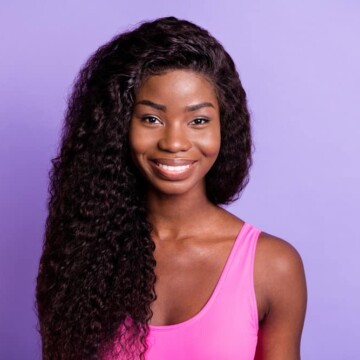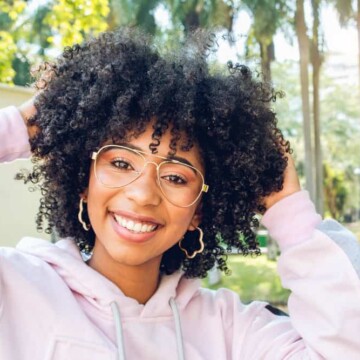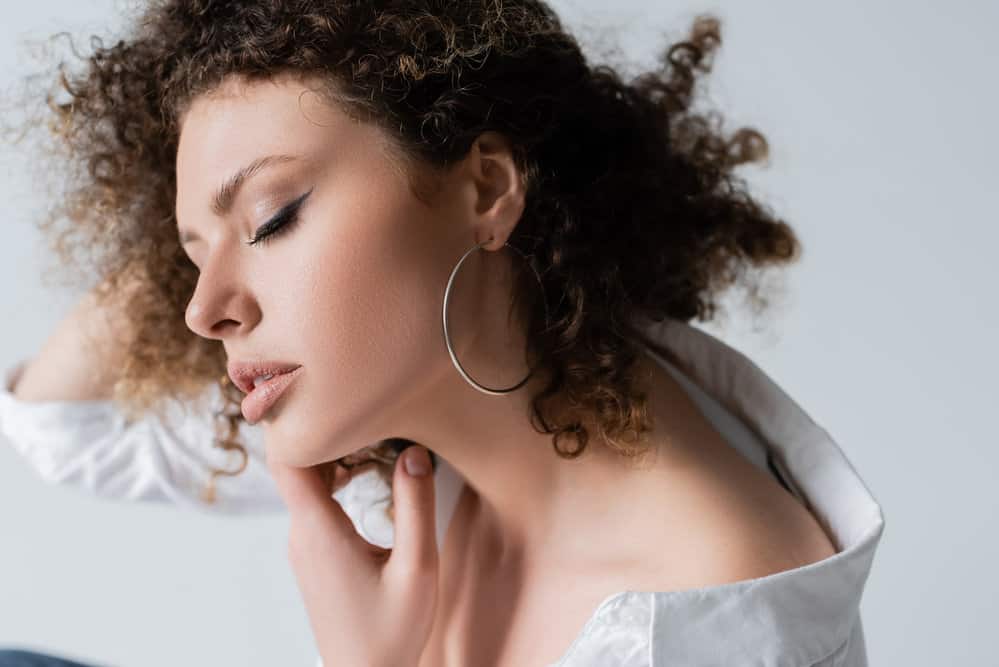
When most people think of type 4 hair, they think of Black people. Why? Because people of African descent often have this hair type.
Yet, inquiring minds and hair enthusiasts wonder, “Can white people have type 4 hair, or is it exclusively found in those with African genes?”
In this article, we will cover what it means to have type 4 hair, whether white people can have this natural hair texture, and discuss other common hair types and their nuances.
Table of Contents
Can White People Have Type 4 Hair?
White people can have type 4 hair. While type 4 hair is most commonly seen in Black individuals, this curl pattern is not limited to one race. People of any race or ethnicity, including Caucasians, can have type 4 hair, although it’s not common.
Any of the 12 hair types listed below are not limited to any particular race or ethnicity and can be found in any individual. While it may be rare to see a white person with coily or kinky type 4 curls, it is certainly not impossible.
Key Takeaways
- Type 4 Hair Diversity: Type 4 hair, characterized by tight coils and a kinky texture, is commonly associated with African Americans but can be found in people of all races, including white individuals, though it's rare.
- Hair Type Categories: There are four main hair types (Type 1 to 4), each with three subcategories (a, b, c), illustrating the spectrum from straight to coily hair. Type 4 is the most textured, often dry, with tighter curls or coils.
- Common Hair Types in Ethnic Groups: While Type 4 hair is prevalent in African American communities, white people generally have Type 1 (straight) or Type 2 (wavy) hair. Asian populations typically exhibit straight, Type 1 hair.
- Achieving Different Curl Types: Techniques exist for white women or others with straight hair (Type 1) to temporarily create Type 4 curls using tools like pencils or skewers and heat or achieve Type 2 or 3 curls with texturizing sprays and heat styling tools.
- Natural Hair Movement and Diversity: The natural hair movement embraces various hair types across different ethnicities, promoting understanding and appreciation of different textures, from loose curls to coily strands, and highlighting the importance of using suitable products for each unique hair type.
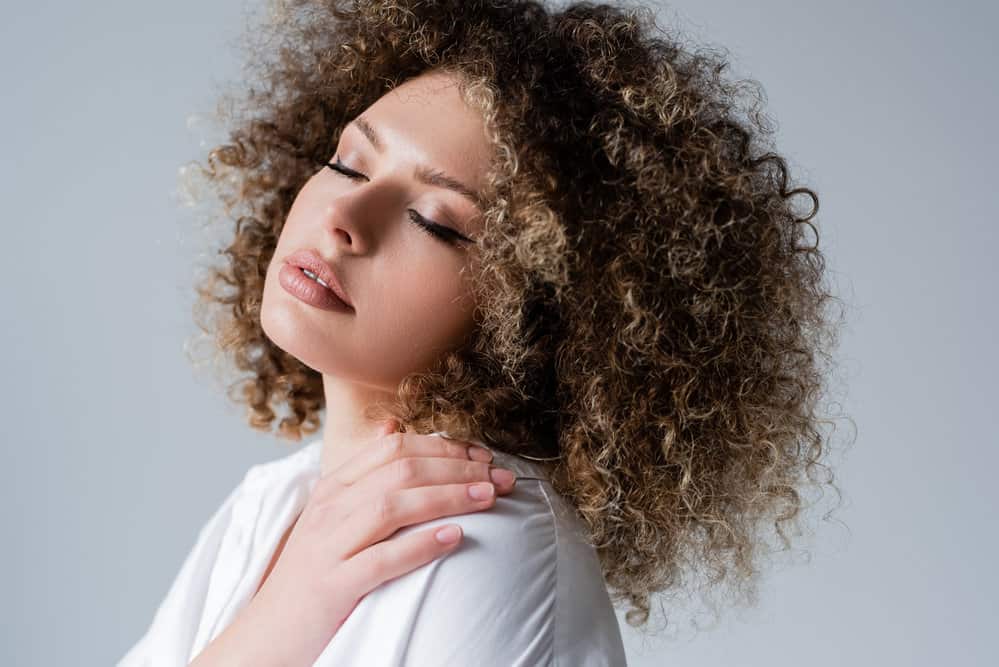
What Is Type 4 Hair?
Before we jump into whether white people have type 4 hair, we want to ensure that you know exactly what type 4 hair is in relation to other hair types.
There are four main hair typing categories (Type 1, 2, 3, and 4), and each of them has three subcategories (a, b, and c). Here’s a quick visual breakdown for you using the Andre Walker Hair Typing System – there are 12 hair types in all.
- Type 1: Straight
- 1a, 1b, 1c
- Type 2: Wavy
- 2a, 2b, 2c
- Type 3: Curly
- 3a, 3b, 3c
- Type 4: Coily, Kinky
- 4a, 4b, 4c
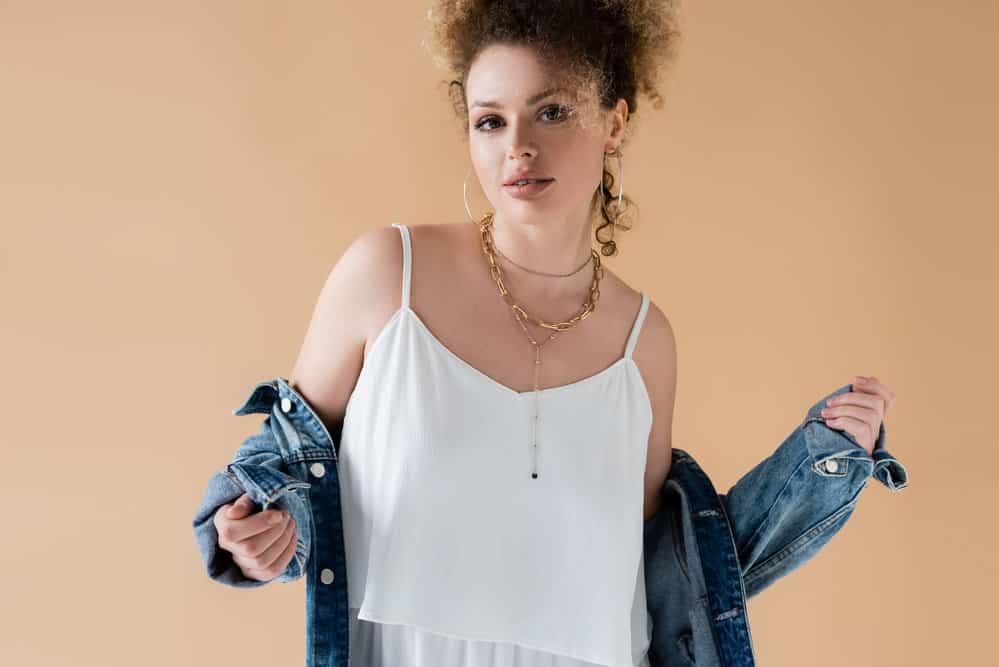
Note: Each subcategory indicates a slightly more prominent curl, wave, or texture. For example, type 1a hair is pin-straight, while type 1c hair has more of a bend and more volume.
Type 4 hair is one of the most misunderstood hair types of all. It’s a curl pattern that is very highly textured, sometimes coily, sometimes kinky, and typically on the drier side. The curls within this hair type are often tight and coarse and may have a wiry texture.
The Most Common Hair Types in White People
The most common hair types among white people tend to be within the subcategories of type 1 (straight) and type 2 (wavy).
Certain hair types are more common in certain races due to the genetic influences of a given ethnic group. But this is not to say that there aren’t outliers.
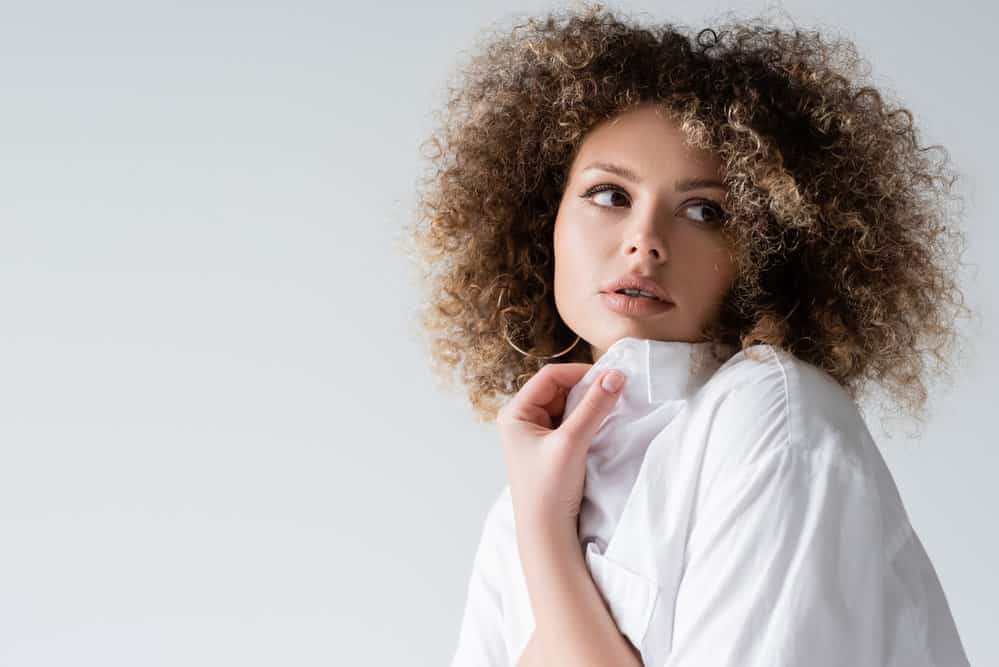
Here are some examples of well-known races and their typical hair types:
- Asian hair. Asian people usually have straight type 1 hair that grows extremely fast. Their hair strands have a cylindrical shape and grow perpendicular to the scalp.
- African hair. Contrary to Asian hair, African hair is typically type 3 (curly) or type 4 (coily/kinky). The curved nature of the hair follicles is what gives these tight curls their shape.
- Caucasian hair. Caucasian people tend to have a hair type that is somewhere in between Asian hair and African hair. Instead of being round or flat, Caucasian hair follicles tend to take on more of an oval shape. They also grow diagonally from the scalp. Due to these two factors, Caucasian hair typically has a straight or wavy texture.
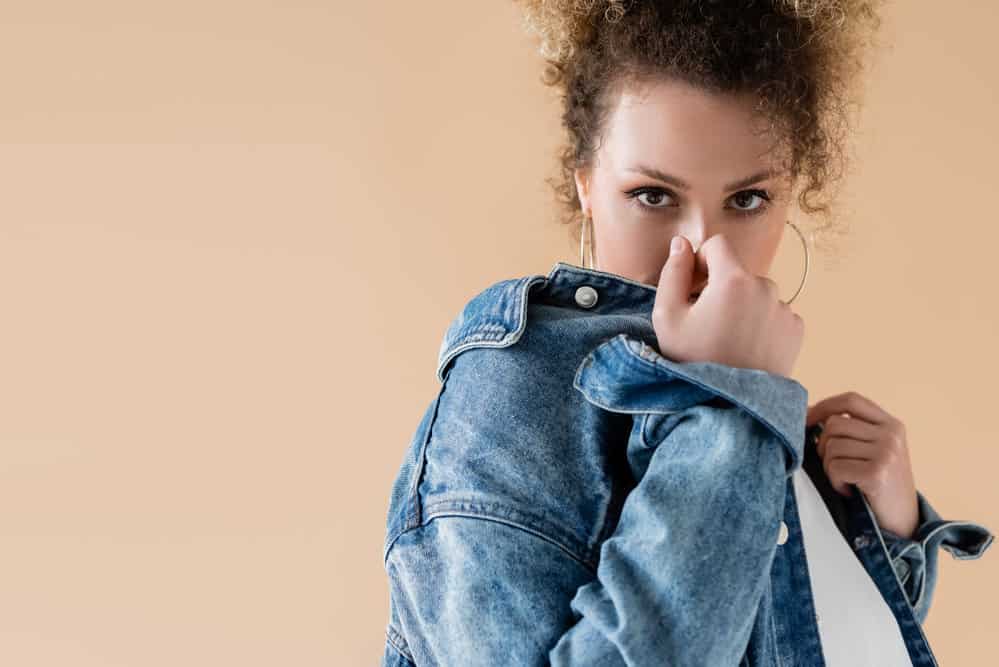
While these are the most common hair types and structures found within their respective races, these tendencies do not occur 100% of the time.
Genetics is very complicated and can be unpredictable – a white person can have type 3 or 4 hair, while those of African descent can be born with straight or wavy hair.
Therefore, it is possible for a white individual to have any hair type, from type 1 all the way to type 4.
Can White People with Straight Hair Get Curls?
There are a few ways that a white person with straight hair, or any individual with type 1 hair, can create artificial curls or enhance their slight curl pattern to make it more prominent. These tips will not lead to a permanent hair transformation, but they’ll certainly help if you’re looking for a temporary change:
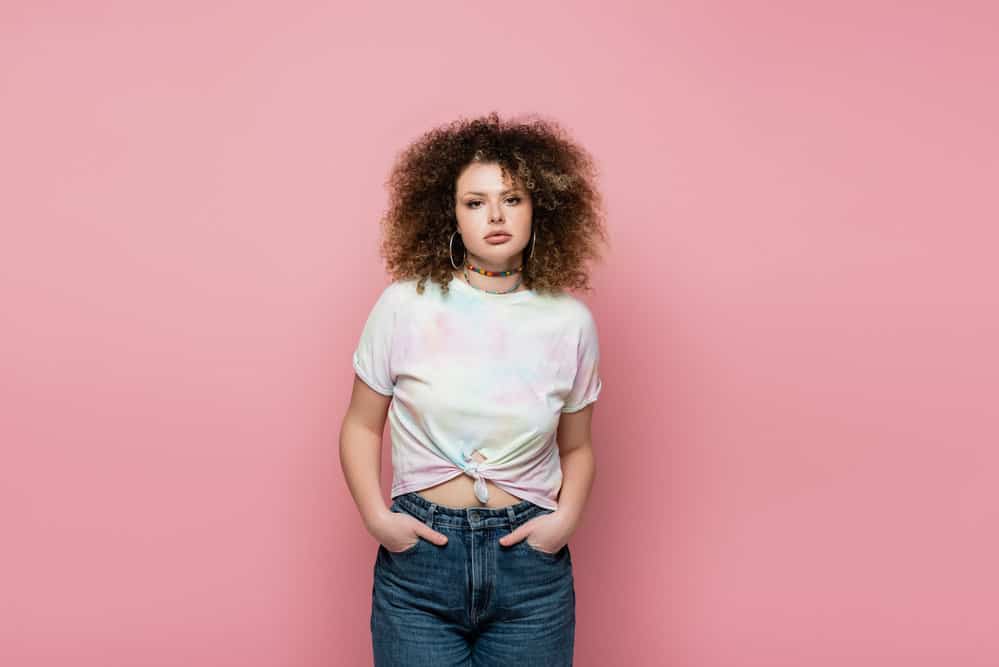
Get Type 4 Curls
It can be challenging to get type 4 curls on type 1 hair, but the pencil or skewer set is sure to do the trick! It will give you tiny coils that can easily pass for natural type 4 curls.
Here’s what you need to do to achieve type 4 hair using this method:
- Spray all of your hair with a heat protectant, as this method will require direct heat.
- Turn your flat iron on and set the heat level to medium. If you need to turn the heat up later, you can.
- Take small sections of dry, clean, moisturized hair and wrap them around one pencil or skewer.
- Clamp a flat iron down on your wrapped hair to mold it into the shape of a pencil or skewer.
- Remove the pencil or skewer.
- Watch this tutorial on YouTube to see a visual demonstration using skewers.
If you’ve got the time and energy, you can complete the above method without heat.
All you’ll need to do is wrap a small section of your damp, clean, moisturized hair around a skewer, wrap a small rubber band around the ends to secure, and repeat that all over your head.
When your hair is dry, remove the rubber bands and skewers to reveal your curls.
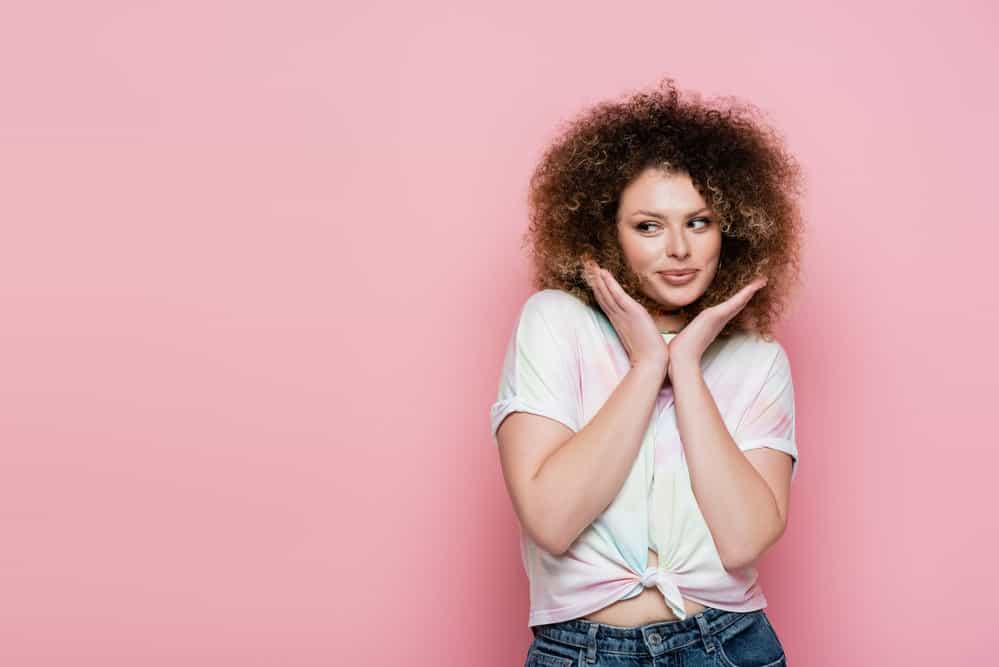
Get Type 2 or 3 Curls
Achieving type 2 or 3 curls on straight hair is a bit easier than creating type 4 curls, being that it’s not as dramatic a change. Here are a couple of techniques you can use:
- Texturizing Spray. For any straight-haired gal who wants a little bit more texture and volume, texturizing spray or wave spray are great options. Styling products like these help to create beachy waves reminiscent of type 2 (wavy) hair.
- Heat styling tools. Another way to achieve curls on straight hair is by using a heat styling tool. Curling irons, flat irons, and curling wands can easily transform pin-straight hair into beautiful bouncy ringlets. Just be sure to use them sparingly, as they can completely ruin your hair, leading to increased frizziness, brittleness, and breakage over time. For long-lasting curls using a heated tool, follow these tips and tricks:
- Spray your hair down with a heat protectant.
- Curl a small section of hair and then pull the tool downward to release the curl.
- Clip each curl to your head after curling to let it cool down in a curled-up position.
- Spray the curl with a strong hold hair spray to lock in the shape.
- Repeat the previous steps all over your head.
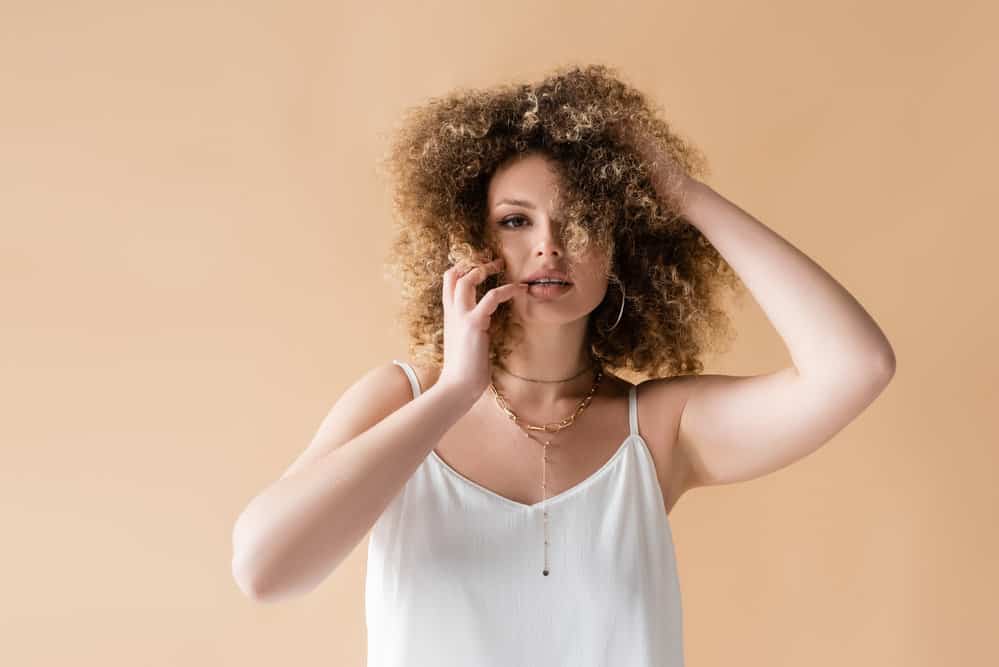
Many assume that hair types are limited to certain races or ethnicities, but this is just not the case. While there are specific hair types that are most often found within particular races, they may pop up in other races as well.
If you’re a white person who wants type 4 hair, you can achieve it using the techniques in this article. If you saw a white person with coily/kinky hair, chances are the curls are artificial, but you never know – they could have been real!
Frequently Asked Questions
Welcome to our FAQ section, which addresses common questions about hair types across different ethnicities. Here, you'll find straightforward answers about the diverse world of hair, from type 4 curls to the unique characteristics of various ethnic hair types.
What Is Type 4 Hair Ethnicity?
Type 4 hair, often associated with the black community, is characterized by tight curls or coils and a highly textured appearance. This type of hair is not exclusive to any ethnicity, although it is most commonly seen in people of African descent. Type 4 hair can be found in individuals from various ethnic backgrounds, showcasing a range of curl patterns and textures.
What Hair Type Does a Caucasian Have?
Caucasians typically have Type 1 (straight) or Type 2 (wavy) hair. This range includes hair that can be thin or thick, with a texture that varies from fine to coarse. The hair shaft of Caucasian hair tends to be round or oval, contributing to its straight or wavy nature. However, there are exceptions, and Caucasians can also have different hair types, including curly or coily.
Can a White Person Have Type 3 Hair?
Yes, a white person can have type 3 hair. Type 3 hair is naturally curly hair that often forms loose or tight curls. While less common in white individuals compared to type 1 or 2 hair, a white person can have this curl type, demonstrating the diversity in hair types across different ethnic groups.
What Is the Rarest Hair Type?
The rarest hair type is often considered to be Type 1C, which is the straightest form of hair but with a slight body wave. This specific hair type is unique due to its combination of being predominantly straight but with a hint of volume and texture, distinguishing it from the typical pin-straight or significantly wavy hair types.
Where Does Caucasian Curly Hair Come From?
Caucasian curly hair originates from genetic factors that influence the shape of the hair follicle and the hair shaft. Curly hair in Caucasians is a result of hair follicles that are oval-shaped, leading to the natural curling of the hair strand. This type of hair reflects the diversity within the Caucasian population, where hair can range from straight to curly, encompassing different textures and curl patterns.
Can Black People Have Straight Hair?
Yes, black people can have straight hair, although it is less common. Straight hair in the black community can occur naturally due to genetic diversity and variations in hair texture. This demonstrates that hair types are not strictly bound by ethnicity, and people of African descent can have a range of hair types, from coily to straight.
- Can a White Person Use Black Hair Dye?
- Can White People Have Waves?
- Curly Hair Extensions for White Females
- Relaxed Caucasian Hair Before and After
We hope that this article helps you to understand the diversity of hair types, the main characteristics of type 4 hair, and who can grow it naturally, as well as how to achieve different types of curls if you have straight hair. We wish you the best with your hair, regardless of your hair type.

